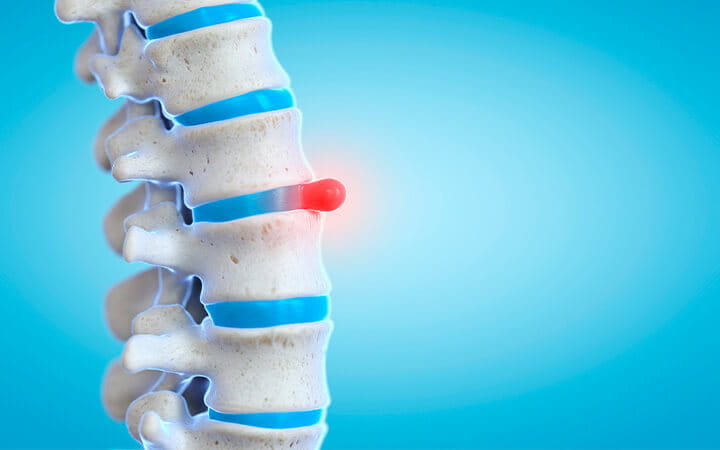A New Way to Treat Herniated Discs, With Less Pain and Downtime
July 16, 2025

When most people think of spinal surgery, a big incision and long recovery period are among the first things that come to mind. A new approach can repair herniated discs in an ultra-minimally invasive way, with only a tiny incision and short recovery time.
“It's great for our patients because they're getting the same positive results they’d get with a traditional spine operation, but with a much less invasive surgery,” says Xiaofei Zhou, MD, a neurosurgeon who subspecializes in neurocritical care and spinal surgery at University Hospitals.
Why Smaller Incisions Are Better
The new procedure, using Arthrex technology, allows surgeons to remove the herniated part of a spinal disc with a single, tiny incision – less than a centimeter long.
There are multiple benefits to doing ultra-minimally invasive surgery that requires only a small incision, including:
- Less to no blood loss during surgery
- Minimal damage to tissue, muscles and bone
- Reduced risk of infection
- Lower level of postoperative pain
- Less need for pain medication
- Hospital stay is typically not necessary
- Faster physical recovery
- Quicker return to regular routines and work
- Less scarring
“The average patient goes home the same day,” says Dr. Zhou. “The pain in their leg usually goes away right after the surgery and though they may be sore in their back from the muscle for about a week or two, people tend to do really well and are back at it within a few weeks.”
Minimizing any kind of injury to the spine promotes quicker healing. “If you can do a herniated disc surgery with minimal scarring and tissue disruption, you can also avoid risks for spinal fusions down the line,” says Dr. Zhou. A spinal fusion addresses painful symptoms by connecting two or more bones in the spine to prevent them from moving.
Are There Risks?
No matter what type of procedure is done to treat a herniated disc, there’s an approximately 15 percent risk of the symptoms returning, says Dr. Zhou.
“I tell patients that there’s also a risk of bleeding, infection, cerebral spinal fluid leak, a risk of the procedure not working and you can still have some pain,” she says. “But the benefit of a minimally invasive surgery is that you don't limit your future treatment options.”
Even if you try it and it doesn't work, the other options are still open to you. That’s not always the case with more invasive surgery. “You can't go smaller, but you can always go bigger,” she says.
Who Is a Good Candidate?
Surgery is not always needed for herniated discs. Some herniated discs heal on their own within six to 12 weeks. If you have symptoms, but pain medication, physical therapy and epidural steroid injections (nerve blockers) aren’t relieving them, you may be a good candidate for endoscopic spinal surgery.
This kind of procedure is best for people who have acute herniated discs, meaning that the disc has ruptured relatively recently. If the disc becomes hardened by calcium deposits over time, which can happen with age, it makes surgical treatment more challenging. “It’s a little harder to remove calcified discs,” says Dr. Zhou. “It's not impossible, but it's much easier to remove a fresh herniated disc.” It will also depend on the size and location of the herniated disc, and how it has progressed over time.
When patients are deciding whether the Arthrex procedure is right for them, Dr. Zhou advises them to think about how active they are and what they would do to avoid a spinal fusion. If they’re hoping to get back to their regular routine as quickly as possible or they want to take preventive measures against a future fusion, it’s worth considering.
Dr. Zhou thinks Arthrex is especially beneficial for younger patients who lead active lifestyles. It can also be a good option for people who want (or need) to avoid anesthesia, or who have anxiety about surgery or other factors that put them at higher risk of complications from open surgery. A recent study found that elderly and immunocompromised patients can also benefit from this type of surgery, since the typical hospital stay and recovery time are shorter.
Arthrex technology promises a new era of spine surgery. As the next generation of physicians gets trained in the technique, this ultra-minimally invasive herniated disc procedure is expected to become much more widely used. “I think that’s where this is all heading,” says Dr. Zhou, “It’s great for patients.”
Related Links
At University Hospitals, we offer leading edge treatment, including ultra-minimally invasive endoscopic spine surgery, for a variety of spinal disorders of patients experiencing back pain.
Tags: Spine, Spine Surgery, Xiaofei Zhou, MD


